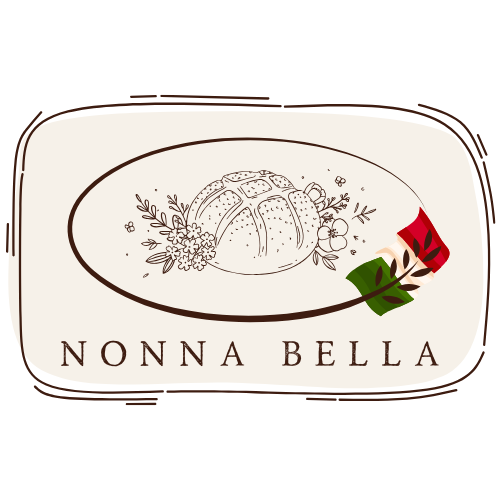
Sourdough Starter vs Yeast: Understanding the Art of Fermentation
Welcome to the fascinating world of sourdough fermentation, where ancient techniques meet modern kitchen adventures. If you're curious about sourdough starter vs yeast, or you're looking to elevate your homemade sourdough bread game, you're in the right place. Let's embark on this flavorful journey where we'll explore the intricacies of sourdough fermentation, offer sourdough baking tips, and discuss the age-old debate between sourdough starter and commercial yeast. Whether you're a seasoned baker or a novice eager to create your first loaf, there's something here for everyone.
To begin your journey into artisan bread baking, make sure you check out some essential tools that can make the process more enjoyable and effective. The Nonna Bella 4.5Qt Enameled Cast Iron Dutch Oven, perfect for baking sourdough loaves, is a great starting point.
1. Sourdough Starter: A Living Culture
A sourdough starter is a living organism, a combination of flour and water fermented over time to harness wild yeast and lactic acid bacteria. This symbiotic relationship is the cornerstone of sourdough fermentation, giving sourdough bread its unique flavor and texture. Creating and maintaining a sourdough starter requires patience, dedication, and a bit of know-how.
How to Feed Sourdough Starter
Feeding your sourdough starter is crucial to maintaining its health and vigor. A typical sourdough starter feeding schedule involves discarding a portion of the starter and refreshing it with equal parts flour and water. To keep your starter active, aim to feed it at least once a day if kept at room temperature or every few days if refrigerated. For detailed guidance, visit Italian Sourdough for expert tips on sourdough feeding and maintenance.
How to Store Sourdough Starter
Storing your sourdough starter depends on how often you plan to bake. If you bake frequently, keeping your starter at room temperature is ideal. For less frequent baking, refrigerate the starter to slow down fermentation. Remember to revive it with a few feedings before baking.
2. Yeast: The Essential Ingredient
Commercial yeast, often referred to simply as "yeast," is a single strain of yeast species, Saccharomyces cerevisiae. It has been specifically cultivated for its rapid and reliable fermenting power. While convenient, commercial yeast lacks the depth of flavor associated with sourdough.
Wild Yeast Fermentation vs Commercial Yeast
The choice between wild yeast fermentation (sourdough) and commercial yeast often boils down to flavor and texture. Wild yeast fermentation develops more complex flavors and a chewy, open crumb unique to sourdough bread. In contrast, bread made with commercial yeast tends to have a softer crumb and a milder taste.
3. Sourdough Baking Tips
Mastering sourdough baking requires a combination of skill and intuition. Here are some top sourdough baking tips:
- Hydration Levels: Adjust your water ratio based on your local climate and flour type.
- Temperature Control: Maintain consistent temperatures for consistent fermentation.
- Proofing Techniques: Use a Lame Bread Proofing Basket Kit to manage dough development effectively.
4. Troubleshooting Sourdough Starter
Every baker encounters challenges. Here are some common sourdough starter troubleshooting tips:
- Lack of Rise: Ensure your starter is adequately fed and active before baking.
- Overly Sour Bread: Adjust feeding schedules and fermentation times to suit your taste.
5. How to Bake Sourdough Bread
An easy sourdough bread recipe is a must-have. Start by combining your active sourdough starter, water, and flour, then allow the mixture to autolyse. Knead the dough, incorporate salt, and let it rise until doubled. Shape the dough using techniques such as the stretch and fold method, then proof in a basket, and bake in a Nonna Bella Carbon Steel Bread & Loaf Pan.
Best Sourdough Scoring Techniques
Scoring is crucial for directing the expansion of your loaf in the oven. Utilize tools like the Wooden Handle Bread With 5 Blades Lame for precision scoring.
6. Shaping Sourdough Bread
Shaping is an art that ensures your loaf will bake evenly. Techniques such as the boule or batard are popular, giving distinct shapes to your bread.
7. Sourdough for Diabetics
Sourdough bread can be a healthful choice for diabetics. The fermentation process reduces glycemic index levels, providing a more controlled blood sugar response. Consult with healthcare providers for personalized advice.
In conclusion, the choice between sourdough starter vs yeast is a matter of personal preference, each offering unique qualities. Embrace the art of sourdough fermentation and enjoy the delightful aromas and flavors of homemade sourdough. For more information, tips, and tools, visit Italian Sourdough. Happy baking!
